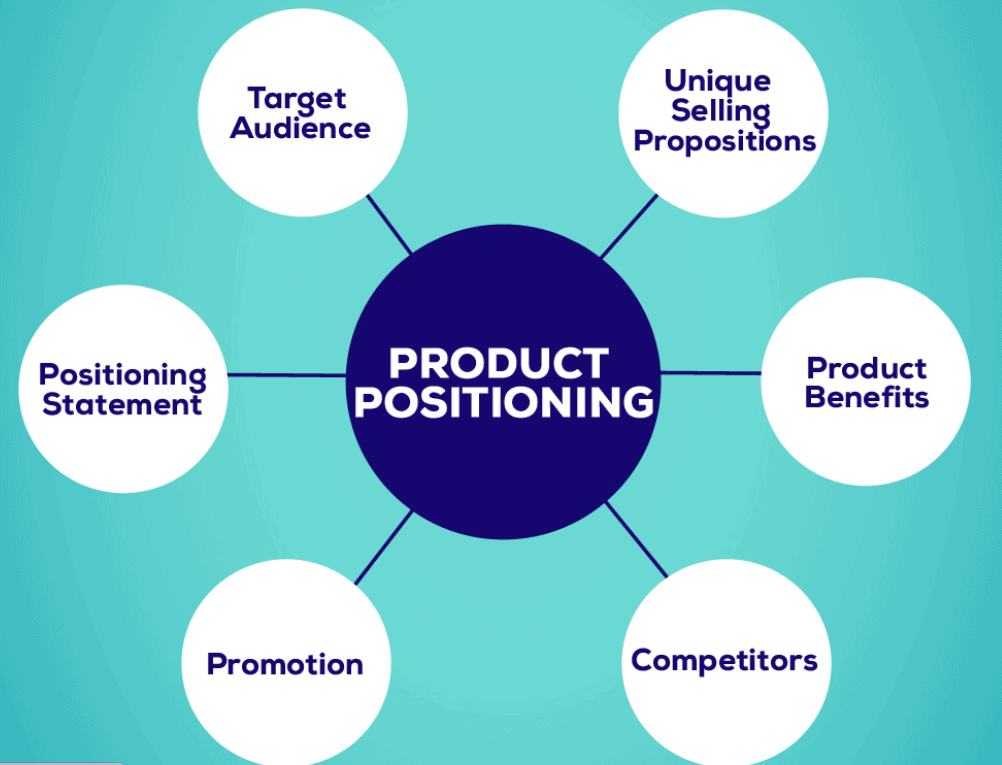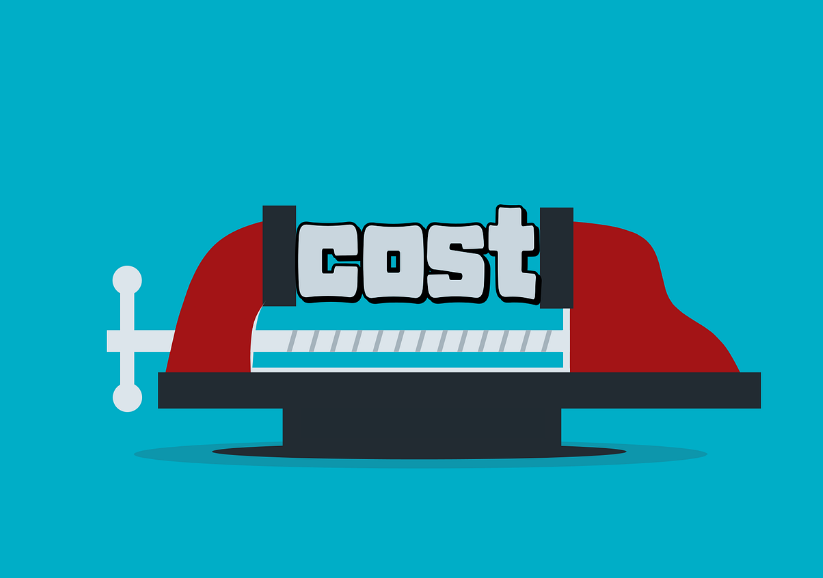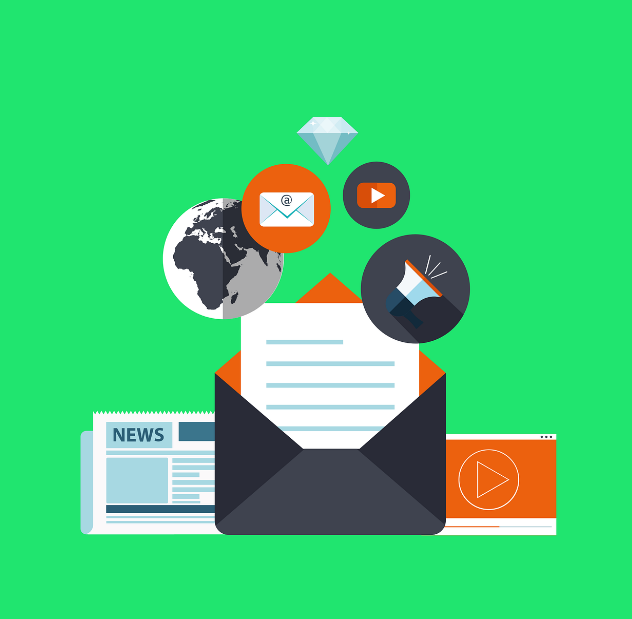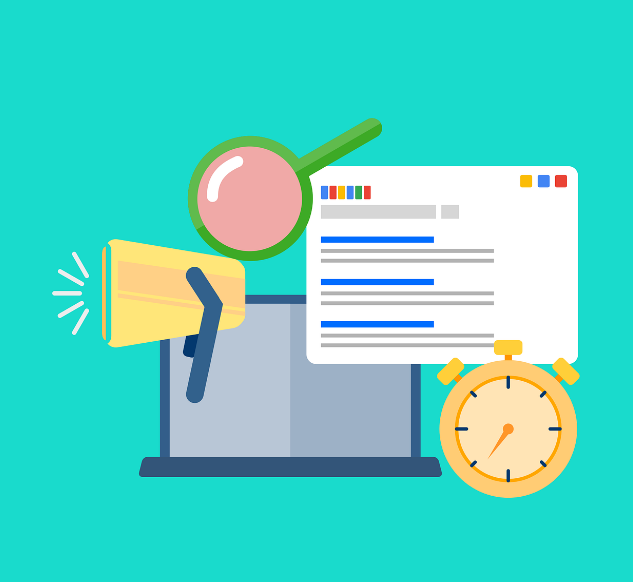In today’s competitive online marketplace, Amazon sellers are constantly seeking ways to gain an edge and drive their businesses to new heights. Enter ChatGPT, a cutting-edge AI chatbot developed by OpenAI.
With its ability to Mastering ChatGPT with our Guide: generate human-like responses to prompts and questions, ChatGPT has become an invaluable tool for Amazon sellers.
In this article, we will explore 15 unique ways to leverage ChatGPT’s capabilities to optimize your Amazon business in 2026.
Statistics:
While ChatGPT is an exceptional tool for Amazon sellers, it’s important to note that success ultimately relies on various factors such as market conditions, product quality, marketing efforts, and customer demand. Here are a few statistics highlighting the impact of AI and technology in the e-commerce industry:
- According to a study by McKinsey, 35% of Amazon’s sales are generated through its recommendation engine, which uses AI algorithms to suggest products to customers.
- E-commerce sales worldwide are projected to reach $6.38 trillion by 2024, indicating the immense potential for growth in the industry.
- A survey conducted by Statista found that 84% of online shoppers trust online reviews as much as personal recommendations, emphasizing the importance of customer feedback and reviews in influencing purchasing decisions.
- AI-powered chatbots are expected to handle 85% of customer interactions by 2025, as reported by Gartner. ChatGPT’s responsive chatbot capabilities align with this trend, providing personalized and efficient customer support.
Top Ways to use ChatGpt for Amazon Listing
1. Product Listing Optimization:
With ChatGPT, you can take advantage of its ability to help you create captivating product titles, bullet points, and descriptions that resonate with your customers.
By providing relevant keywords and prompts, ChatGPT can generate unique and engaging content that captures the attention of your target audience.
This, in turn, can enhance your product listings and boost your visibility in search results. Let’s dive into some examples of how ChatGPT can assist you:
Product Titles:
Input your product details and key features into ChatGPT, and it will provide you with catchy and informative product titles.
For example, if you’re selling a portable blender, you can input prompts like “Create a product title for a portable blender with USB charging” or “Suggest a catchy title for a compact blender for on-the-go use.”
ChatGPT may generate titles like “Blend and Go: USB Rechargeable Portable Blender” or “PowerBlend Mini: Your Convenient Travel Companion.”
Bullet Points:
Bullet points play a crucial role in highlighting the key benefits and features of your product.
Use ChatGPT to generate compelling bullet points by inputting prompts such as “List the advantages of a noise-canceling Bluetooth headphones” or “Create bullet points for a waterproof and durable smartphone case.”
ChatGPT may generate bullet points like “Immerse in Music: Enjoy crystal-clear sound with advanced noise-canceling technology” or “Ultimate Protection: Safeguard your phone from water, dust, and shocks with our rugged case.”
Descriptions:
Crafting informative and engaging product descriptions is essential for attracting customers. Input prompts like “Write a description for an organic skincare moisturizer” or “Compose a captivating description for a versatile kitchen gadget.”
ChatGPT can generate descriptions such as “Revitalize Your Skin: Our organic moisturizer nourishes and hydrates for a youthful glow” or “Master the Culinary Art: Experience the convenience of our multifunctional kitchen gadget for effortless meal preparation.”
2. Competitor Analysis:
Gain a competitive edge by leveraging ChatGPT’s capabilities to analyze your competitors’ product reviews. By inputting their reviews into the chatbox, you can tap into ChatGPT’s ability to extract valuable insights from customer feedback.
This process enables you to identify common complaints and areas where your competitors may be falling short, presenting an opportunity for you to differentiate your own products and provide a superior customer experience. Here are a few examples of how ChatGPT can assist you:
Identify Product Pain Points:
Input a selection of your competitors’ product reviews into ChatGPT and ask it to identify the main pain points mentioned by customers. For instance, if you’re in the fitness equipment industry, you could ask ChatGPT to analyze reviews for a specific type of treadmill.
ChatGPT may reveal common complaints such as poor durability, noisy operation, or limited workout program options.
Armed with this information, you can focus on addressing these pain points in your own product, positioning it as a superior alternative.
Enhance Product Features:
Request ChatGPT to identify features that customers appreciate in your competitors’ products. By inputting reviews and asking for insights on positive aspects, you can gain a better understanding of what customers value.
For example, if you sell wireless headphones, you could ask ChatGPT to analyze customer reviews of a popular competitor’s product.
It may highlight features such as long battery life, excellent sound quality, or comfortable fit. You can leverage this information to ensure your own product includes or improves upon these desirable features.
Uncover Unmet Customer Needs:
Utilize ChatGPT to identify areas where customers express dissatisfaction or suggest improvements in your competitors’ products.
By inputting reviews and asking for insights on potential improvements, you can uncover unmet needs and discover opportunities for innovation.
For instance, if you sell home security systems, you could input reviews of a leading competitor’s product. ChatGPT may reveal customer requests for more intuitive mobile app controls or additional integrations with smart home devices.
This knowledge can guide your product development efforts and allow you to offer a more comprehensive solution.
Pricing Negotiations:
Overcoming pricing challenges with your supplier can be made easier with the help of ChatGPT in drafting a persuasive negotiation letter.
By effectively articulating your position and presenting your case, you can leverage your status as a reliable customer to engage in a constructive conversation about more favorable pricing terms.
Utilize ChatGPT’s capabilities to create a well-crafted letter that increases your chances of reaching a mutually beneficial agreement. Here are some examples of how ChatGPT can assist you:
Highlighting Long-term Partnership:
Start your letter by acknowledging your positive business relationship with the supplier. Emphasize the duration and success of your collaboration, illustrating that you have been a reliable and committed customer. For example:
“Dear [Supplier’s Name],
I hope this letter finds you well. I wanted to take a moment to express my gratitude for the fruitful partnership we have had over the past [number of years/months]. Our collaboration has been marked by trust, open communication, and shared success.”
Market Research and Competitive Pricing:
Utilize ChatGPT to gather relevant market data and competitive pricing information. Incorporate these insights into your negotiation letter to demonstrate your knowledge of the market landscape and the competitive pricing expectations.
For instance: “Furthermore, through extensive market research, I have identified industry standards and competitive pricing for similar products.
Based on my findings, it appears that there may be an opportunity for us to align our pricing more closely with market trends, ultimately benefiting both parties.”
Presenting Volume and Growth Potential:
Highlight your business growth and the potential for increased volume in your negotiation letter.
Showcase how your partnership can mutually benefit from a revised pricing structure that accommodates your expanding business. Consider including statistics or data to support your claims, such as:
“As our business continues to grow steadily, we anticipate an increase in volume and demand for your exceptional products.
In fact, our sales have experienced an annual growth rate of [X%] over the past [Y] years, which indicates a significant market opportunity for both of us.”
Expressing Commitment to Collaboration:
End your negotiation letter by reaffirming your commitment to a collaborative and long-term partnership.
Emphasize the value you place on their products and the desire to continue working together for mutual success. For example:
“I sincerely believe that by addressing our pricing concerns collaboratively, we can further strengthen our partnership and capitalize on the immense growth potential within our market.
Your products have consistently met the expectations of our customers, and we are dedicated to continuing this successful journey together.”
Remember to personalize the letter according to your specific circumstances and use ChatGPT’s generated content as a starting point.
Tailor the language, add relevant details, and ensure a professional and respectful tone throughout the negotiation letter.
3. Social Media Content Generation:
Elevate your social media presence and captivate your audience effortlessly with the help of ChatGPT.
By inputting relevant keywords into the chatbox, you can generate engaging and impactful social media content that resonates with your target audience.
Take advantage of ChatGPT’s capabilities to effortlessly create posts that drive traffic and boost sales for your Amazon store. Here are some examples of how you can leverage ChatGPT for generating engaging social media content:
Highlight Product Benefits:
Use ChatGPT to craft posts that emphasize the unique benefits and features of your products. Incorporate keywords that resonate with your target audience and showcase how your products solve their problems or meet their needs. For instance:
“Introducing our latest product, designed to simplify your life! Say goodbye to [common problem] with our innovative [product name]. Get ready to experience [benefit] like never before. Don’t miss out on this game-changer!”
Share Testimonials and Reviews:
Utilize ChatGPT to draft posts that leverage positive testimonials and reviews from satisfied customers. Showcase their experiences and highlight the value your products have provided.
Consider including compelling quotes or snippets from their feedback to capture attention. For example:
“Our customers love us, and here’s why! [Customer Name] raved about our [product name], calling it a ‘game-changer’ and praising its [specific benefit]. Join [number] of satisfied customers and upgrade your [problem] today!”
Promote Limited-Time Offers:
Boost engagement and drive sales by incorporating time-sensitive promotions into your social media content. Ask ChatGPT to generate posts that include coupon codes or flash deals to entice your audience. For instance:
“Hurry, it’s deal time! For a limited period, enjoy an exclusive [X%] discount on our [product category]. Use code ‘SALE20’ at checkout and experience [benefit]. Don’t miss out on this incredible offer!”
Ask Engaging Questions:
Engage your audience by posing questions related to your products or industry. Ask ChatGPT to generate posts that spark conversations and encourage your followers to share their thoughts or experiences.
Consider incorporating hashtags to increase visibility.
For example: “We want to hear from you! What’s your favorite way to use our [product]? Share your creative ideas in the comments below. Let’s inspire each other! #ProductLove #Innovation”
Remember to review and customize the generated content from ChatGPT to align it with your brand’s voice and style.
Add relevant visuals, include appropriate hashtags, and maintain a consistent posting schedule to maximize the impact of your social media content. With ChatGPT as your creative partner, creating engaging posts that resonate with your audience will be a breeze.
Email Communication:
Save time and effort by leveraging the power of ChatGPT to craft effective and personalized emails for your Amazon business.Whether you need to communicate with suppliers or customers, ChatGPT can assist you in composing professional and compelling emails that leave a lasting impression.
Here’s how ChatGPT can help you create impactful email communications:
Supplier Communications:
When reaching out to suppliers, ChatGPT can generate a draft email that covers essential information such as product inquiries, pricing negotiations, or order replenishment requests.
Simply input your specific requirements and let ChatGPT create a preliminary email that you can then customize. Here’s an example:
“Dear [Supplier’s Name],
I hope this email finds you well. I wanted to discuss the pricing of our ongoing orders for [Product Name]. As our business has been growing steadily, we are exploring ways to optimize our costs while maintaining the quality that we have come to appreciate from your products.
After conducting thorough market research, we have noticed that the prices offered by some of our competitors are more competitive compared to our current arrangement.
We value our partnership with you and would like to explore the possibility of adjusting the pricing structure to ensure a sustainable and mutually beneficial relationship.
I would appreciate it if we could schedule a call or arrange a meeting to discuss this further. I believe that by working together, we can find a solution that meets both our needs and strengthens our collaboration.
Thank you for your attention to this matter. I look forward to hearing from you soon.
Best regards,
[Your Name]
[Your Company]”
Customer Communications:
ChatGPT can also assist in crafting personalized and engaging emails to your customers. Whether it’s order confirmations, follow-ups, or addressing customer inquiries, ChatGPT can generate a draft that you can customize based on the specific context. Here’s an example:
“Dear [Customer’s Name],
Thank you for choosing [Your Company] for your recent purchase of [Product Name]. We are thrilled to have you as a valued customer and wanted to take a moment to express our gratitude.
Your order [Order Number] has been successfully processed, and we are working diligently to ensure a seamless fulfillment process. Our team is carefully packaging your items, and you can expect your package to arrive at your doorstep by [Delivery Date].
We would also like to extend our commitment to your satisfaction. Should you have any questions, concerns, or need further assistance, please don’t hesitate to reach out to our customer support team. We are here to help and ensure that you have an exceptional experience with our products.
Once again, thank you for choosing [Your Company]. We genuinely appreciate your business and look forward to serving you again in the future.
Warm regards,
[Your Name]
[Your Company]”
Remember to review and customize the generated email drafts from ChatGPT to match your brand’s tone, style, and specific requirements.
Pay attention to details such as personalization, clarity, and professional language to ensure effective communication. With ChatGPT as your writing assistant, crafting compelling emails becomes more efficient, allowing you to focus on other aspects of your Amazon business.
4. Influencer Outreach:
Harness the power of ChatGPT to discover micro-influencers and creators who align with your niche and brand values.
By providing specific criteria and prompts, ChatGPT can generate a list of potential influencers who may be interested in promoting your products.
This allows you to tap into their engaged audience and leverage their influence to boost your brand awareness and drive sales. Here’s how ChatGPT can assist you in finding relevant micro-influencers and creators:
Define Your Requirements:
Start by inputting your specific requirements and preferences into ChatGPT. Consider factors such as niche relevance, target audience demographics, follower count, engagement rates, and any specific influencer qualities you’re looking for.
For example: “Hi ChatGPT, I’m looking for micro-influencers and creators who specialize in the [your niche] industry.
They should have an engaged audience with a minimum of [desired follower count] followers and a strong track record of high engagement rates. Please provide me with a list of potential influencers who align with these criteria.”
Receive a List of Potential Influencers:
Based on the information you’ve provided, ChatGPT will generate a curated list of potential influencers and creators who match your requirements.
This list can include their social media handles, follower counts, engagement rates, and other relevant details. Review the list to identify influencers who resonate with your brand and target audience.
Establish Collaborations:
Once you have the list of potential influencers, it’s time to reach out and establish collaborations.
Craft personalized outreach messages that highlight the mutual benefits of working together and the value your products can provide to their audience. Here’s an example of an outreach message:
“Dear [Influencer’s Name],
I hope this message finds you well. I’ve been following your work on [social media platform] and have been impressed by the valuable content you share with your engaged audience.
As a fellow enthusiast in the [your niche] industry, I believe our collaboration could be mutually beneficial.
I recently came across your profile and noticed that our brands share a similar passion for [specific niche interest]. I believe your authentic voice and influence can greatly resonate with our target audience. We offer a range of high-quality products that align with your audience’s interests and needs.
I would love to discuss the possibility of partnering with you to promote our products. Your genuine recommendations and insights have the potential to make a significant impact on our brand awareness and sales. I have attached more information about our products and their benefits for your reference.
If you’re interested, I would be delighted to schedule a call or discuss further details via email. Please let me know your availability, and we can explore how we can create a successful collaboration that adds value to both our audiences.
Thank you for considering this opportunity, and I look forward to hearing from you soon.
Warm regards,
[Your Name]
[Your Company]”
Remember to customize the outreach message to reflect your brand’s tone, establish a personal connection with the influencer, and highlight the unique value your products offer.
Utilizing ChatGPT’s assistance in finding micro-influencers and creators can expand your reach, increase brand visibility, and drive conversions.
However, it’s important to conduct thorough research and evaluate each influencer’s authenticity, engagement, and audience alignment before finalizing any collaborations. With ChatGPT’s insights, you can find the right influencers to amplify your brand message and achieve your marketing goals.
5. Brand Name Ideation:
When embarking on a private label business, finding the perfect brand name is crucial for building recognition and establishing a strong identity.
ChatGPT can be an invaluable resource in brainstorming unique and memorable brand names. Here’s how ChatGPT can assist you in this process:
Input Relevant Keywords and Descriptions:
Provide ChatGPT with relevant keywords related to your product or business and descriptive information that captures the essence of your brand. For example:
“Hi ChatGPT, I’m starting a private label business in the [your niche] industry. I’m looking for a brand name that conveys qualities like [list a few desired attributes or characteristics]. Please generate a range of brand name suggestions that reflect these qualities.”
Generate a Range of Suggestions:
Based on the information you’ve provided, ChatGPT will generate a list of brand name suggestions that align with your desired attributes.
This list can include creative combinations, variations, or unique names that capture the essence of your brand. Explore the generated suggestions and note down the ones that resonate with you.
Conduct a Trademark Search:
Once you have a list of potential brand names, it’s crucial to conduct a thorough trademark search to ensure the availability of the chosen names.
This step helps you avoid legal conflicts and ensures that you can secure the rights to use the name for your business. Use appropriate trademark search databases and consult legal professionals to verify the availability of the names.
Evaluate and Choose the Best Name:
Review the generated suggestions in light of the trademark search results and your brand vision.
Consider factors such as memorability, uniqueness, relevance to your target audience, and potential for brand expansion. Select the name that best captures your brand’s essence and aligns with your long-term business goals.
Remember, while ChatGPT can provide you with a range of creative suggestions, it’s essential to conduct due diligence and research to ensure the chosen brand name is available for use and resonates with your target audience.
6. Customer Support:
Delivering exceptional customer service is vital for the success of your Amazon business. With ChatGPT, you can provide timely and helpful responses to customer queries and complaints, ensuring a positive experience for your customers.
Here’s how ChatGPT can assist you in providing excellent customer service:
Input Customer Queries and Complaints:
When customers reach out with inquiries, concerns, or complaints, input their messages into ChatGPT’s chatbox. Include relevant details to provide context for a more accurate response.
For example: “Hi ChatGPT, a customer recently reached out with the following query/complaint: [customer message]. How should I respond to address their concern and provide a satisfactory resolution?”
Craft Professional and Personalized Responses:
ChatGPT will generate human-like responses based on the customer’s query or complaint. These responses can help you draft professional and personalized messages to address the customer’s concerns effectively.
Edit and customize the generated response to ensure it aligns with your brand voice and provides a suitable solution. Here’s an example:
“Dear [Customer’s Name],
Thank you for reaching out to us with your query/complaint. We apologize for any inconvenience caused and appreciate your patience.
After carefully reviewing your concern, we understand the importance of resolving this matter promptly.
We have taken note of the issue you raised and are committed to finding a suitable solution. Our team is working diligently to investigate the matter and will provide you with a comprehensive response within [specific timeframe].
We value your satisfaction and want to assure you that we are dedicated to resolving this issue to your utmost satisfaction. If you have any additional information or questions, please don’t hesitate to reach out to our customer support team.
Once again, we apologize for any inconvenience caused and appreciate your understanding.
Best regards,
[Your Name]
[Your Company Name]”
Provide Timely and Supportive Assistance:
Respond to customer queries and complaints promptly, demonstrating your commitment to their satisfaction.
Use the generated response as a starting point and personalize it based on the specific details of the customer’s query or complaint. Be empathetic, professional, and proactive in offering solutions or alternatives to address their concerns effectively.
By utilizing ChatGPT to provide customer service, you can ensure prompt and helpful responses that enhance customer satisfaction and loyalty.
Remember to tailor the generated responses to each customer’s specific needs and maintain a positive and supportive tone throughout the interaction.
7. Inventory Management:
Efficient inventory management is crucial for Amazon sellers to ensure a smooth operation and maximize sales.
ChatGPT can be a valuable tool in this process by generating insights based on historical sales data. Here’s how ChatGPT can assist you in inventory management:
Input Historical Sales Data:
Provide ChatGPT with relevant information regarding your past sales figures, including product performance, seasonal trends, and any fluctuations in demand.
Additionally, consider incorporating market trends and industry insights to enhance the accuracy of the generated recommendations.
Analyze Inventory Levels:
ChatGPT can analyze your historical sales data and provide insights on optimal inventory levels.
It considers factors such as sales velocity, lead times, and market demand to help you determine the appropriate quantity of stock to maintain for each product. By avoiding overstocking or understocking, you can optimize your inventory management.
Identify Reorder Timings:
Based on the analysis of historical sales data, ChatGPT can also provide recommendations on when to reorder products.
It takes into account lead times, product turnover rates, and expected demand to suggest the ideal timing for replenishing your inventory. This helps you avoid stockouts and ensure a continuous supply of products for your customers.
Adapt to Seasonal Demand:
Seasonal fluctuations in demand can significantly impact your inventory management. ChatGPT can consider historical sales patterns during specific seasons or events and offer insights on adjusting your inventory levels accordingly.
By aligning your stock with anticipated demand, you can effectively meet customer needs while minimizing excess inventory during off-peak periods.
Optimize Stock Allocation:
If you sell multiple products, ChatGPT can provide recommendations on allocating inventory among different SKUs.
By considering sales performance, profit margins, and market demand, ChatGPT can suggest adjustments to the stock levels for each product. This ensures that your inventory is allocated strategically to maximize sales and profitability.
8. Market Trend Analysis:
Staying updated on market trends and consumer preferences is vital for the success of your Amazon business. With ChatGPT, you can effectively analyze industry news and reports to gain valuable insights. Here’s how ChatGPT can assist you in this process:
Input Relevant Keywords or Prompts:
Provide ChatGPT with specific keywords or prompts related to your industry or product niche. This could include terms like “current market trends,” “consumer behavior,” or “product demand.”
By inputting relevant information, you can guide ChatGPT to generate insightful responses.
Analyze Industry News and Reports:
ChatGPT can process and analyze industry news articles, market reports, and consumer studies to extract valuable information.
It can identify emerging trends, changes in consumer behavior, and shifts in product demand. This allows you to stay informed about the latest developments and adapt your Amazon business strategy accordingly.
Identify Emerging Market Trends:
By analyzing industry news and reports, ChatGPT can highlight emerging market trends that may impact your business.
Whether it’s a new product category gaining popularity or a change in consumer preferences, ChatGPT can provide insights into these trends. This knowledge empowers you to make informed decisions and stay ahead of the competition.
Understand Consumer Behavior:
ChatGPT can help you understand consumer behavior by analyzing market research and consumer studies.
It can provide insights into the factors that influence purchasing decisions, such as price sensitivity, product features, and brand loyalty.
This understanding allows you to tailor your product offerings and marketing strategies to meet consumer expectations.
Adapt Your Business Strategy:
Armed with the insights generated by ChatGPT, you can adapt your Amazon business strategy to align with current market demands.
Whether it’s introducing new products, optimizing existing listings, or adjusting pricing strategies, staying informed about market trends enables you to make strategic decisions that resonate with your target audience.
9. Ad Copywriting:
Crafting compelling ad copy is crucial to grab the attention of your target audience and drive conversions.
With ChatGPT, you can easily create persuasive ad content that effectively communicates the key features and benefits of your products. Here’s how ChatGPT can assist you in this process:
Input Key Product Features:
Provide ChatGPT with the essential features and characteristics of your product. This could include details like functionality, durability, design, or any other unique selling points.
By inputting this information, ChatGPT can generate ad copy that highlights these key features and emphasizes their value to potential customers.
Define Target Audience:
Specify the demographics and preferences of your target audience. This could include factors like age, gender, interests, or specific needs.
By understanding your target audience, ChatGPT can generate ad copy that resonates with their desires and pain points, making it more compelling and relevant.
Generate Persuasive Ad Content:
Using the provided information, ChatGPT can generate persuasive ad copy that captures attention and drives conversions. It can craft engaging headlines, descriptive body text, and compelling calls-to-action.
The generated content will focus on highlighting the unique selling points of your product and conveying its value to the target audience.
Tailor the Content:
While ChatGPT can generate a draft of ad copy, it’s important to review and tailor the content to align with your brand’s voice and tone.
Edit the generated text, add specific details, and personalize it to ensure that it reflects your brand identity and resonates with your target audience effectively.
Test and Refine:
Once you have the initial ad copy, it’s crucial to test its effectiveness through A/B testing or other advertising strategies.
Monitor the performance of your ads, such as click-through rates, conversion rates, and customer feedback, to identify areas for improvement. Use this data to refine and optimize your ad copy for better results.
10. Keyword Research:
To maximize your product’s visibility on Amazon, conducting thorough keyword research is essential.
With ChatGPT, you can streamline this process and generate a list of high-volume keywords to incorporate into your product listings and marketing efforts. Here’s how ChatGPT can assist you with keyword research:
Input Product Information:
Provide ChatGPT with relevant details about your product, including its category, features, and target audience. This information will help ChatGPT understand your product and generate more accurate keyword suggestions.
Ask for High-Volume Keywords:
Ask ChatGPT to generate a list of high-volume keywords that are relevant to your product.
High-volume keywords are frequently searched by Amazon shoppers, which means they have a higher chance of driving traffic to your product listing.
Incorporate Keywords in Product Listings:
Once you receive the generated keyword list, strategically incorporate these keywords into your product title, bullet points, product description, and backend search terms.
This optimization will improve your product’s visibility in Amazon’s search results and increase the likelihood of attracting potential customers.
Utilize Keywords in Sponsored Ads:
Incorporate the high-volume keywords into your Amazon Sponsored Ads campaigns. By targeting these keywords in your ads, you can increase the visibility of your products and reach a wider audience.
Examples: Suppose you’re selling a fitness tracker. You can input relevant product information such as “fitness tracker,” “activity tracker,” “heart rate monitor,” “step counter,” and “smartwatch” into ChatGPT. Then, you can ask ChatGPT to generate a list of high-volume keywords related to fitness trackers. The generated list might include keywords like “best fitness tracker,” “waterproof fitness tracker,” “fitness tracker with GPS,” and “fitness tracker for women.”
By incorporating these high-volume keywords into your product listings and sponsored ads, you can improve your product’s visibility and increase its chances of being discovered by potential customers.
Remember to conduct regular keyword research and stay updated with trending keywords to optimize your Amazon presence effectively.
Quick Links:
Conclusion: Mastering ChatGPT With Our Guide 2026
In 2026, ChatGPT gives Amazon sellers a wide variety of new ways to improve their business. There are many things that can be done, such as optimizing product listings, analyzing competitors, communicating through email, and making material for social media.
ChatGPT is a useful tool, but it’s important to add to what it can do with other tools and methods for sellers.
By using AI and technology, Amazon sellers can stay competitive, improve the customer experience, and drive their businesses toward success in the ever-changing world of e-commerce.
So, take advantage of ChatGPT’s potential and find out how it can change the way you sell on Amazon.












